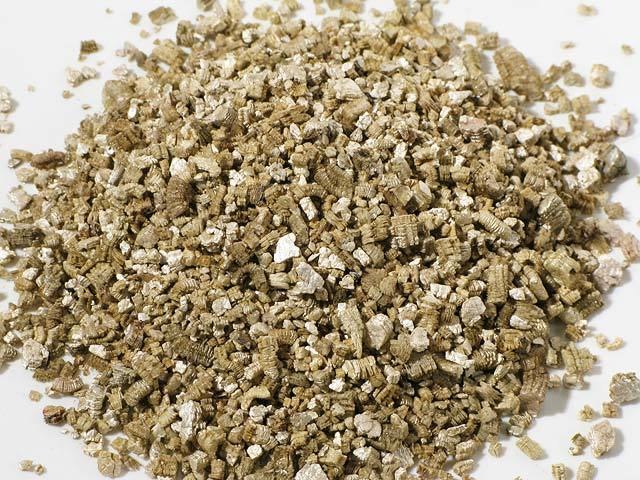What is vermiculite and what are its distinctive properties
Vermiculite is mineral from the group hydromicas, formed in the earth's crust, environmentally friendly. The vermiculite, used in gardening, is subjected to first heat treatment at 800oC, and then turns into a loose flaky material. It is a good natural stimulant, because it contains oxides of calcium, magnesium, potassium, aluminum, iron and silicon and many other trace elements. Like material, vermiculite is highly porous, and between scales is always a lot of air. This structure allows you to get the substrate good aeration rates at which the soil does not become caked, the surface crust is formed, there remains excess moisture in the substrate. On the development of the root system of plants vermiculite foam is affected the most positive way.
Vermiculite easily absorbs the moisture and just as easily releases it to plant roots by creating an environment with optimal humidity and good air access. Coefficient of moisture absorption vermiculite is very large, 100 g of substrate absorb 400 ml. of water. Due to these properties, vermiculite is used for growing plants hydroponically.
How to apply vermiculite
Most often used vermiculite for sprouting seed. Thus prepared for germination, seeds are mixed with fine vermiculite, previously well moistened, and then placed the mixture in plastic bags and leave in a warm place for germination. After the seeds germinate, they are placed in specially prepared containers with soil composed of a mixture of soil and vermiculite in the proportions respectively of 2:1. The addition of vermiculite allows the seedlings to come up quickly and grow as protects against root and stem rot, black leg, which is suffering almost any seedlings.
Before sowing seeds in open ground, it is also possible to use vermiculite. He is brought into the seedbed before sowing along its entire length at the rate of 1 tbsp per 10 cm in the open ground seedlings planted, vermiculite also helps its the best survival. In each hole before planting, add 3-4 tbsp. of vermiculite, and only after that planting a tree.
The introduction of vermiculite into the soil is possible in the complex with different composts. It is added to the litter manure, peat, poultry manure and chopped straw. The hundredweight of any of these organic compounds takes 3-4 buckets of vermiculite.
The vermiculite is very well rooted cuttings, especially good substrate composed of neutral peat and vermiculite in 1:1 ratio. Cuttings in such conditions is a more developed root system, and this then affects the health of the entire plant within a few years. When growing seedlings and planting them to a new location with vermiculite is recommended to fill up to 30% of the wells.
